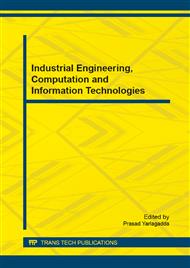p.150
p.154
p.160
p.167
p.172
p.180
p.189
p.194
p.199
Study on the Traffic Capacity of Expressway Based on Cellular Automata Model
Abstract:
Based on the Nagel-Schrekenberg cellular automaton model of traffic flow, this article analyzed the influence that driving on the right side takes to the traffic flow in the condition of light and heavy traffic. With the combination of fluid dynamics and vehicle dynamics, we established the Cellular Automata model for mixed speed two-lane traffic flow on the rule driving on the right side. Then we used the AHP method to find out the large bus share rate, the number of vehicles changing lanes and the influence law of safety factors on traffic flow. We came to a conclusion that the relationship between traffic flow and load are inverted U shape changes in the low load and high load conditions, the accident rate is the maximum when the V/C (the ratio of traffic flow and the ability of corresponding section) is the minimum; with the increase of V/C, the accident rate decreased gradually.
Info:
Periodical:
Pages:
172-179
Citation:
Online since:
December 2014
Authors:
Price:
Сopyright:
© 2015 Trans Tech Publications Ltd. All Rights Reserved
Share:
Citation:


